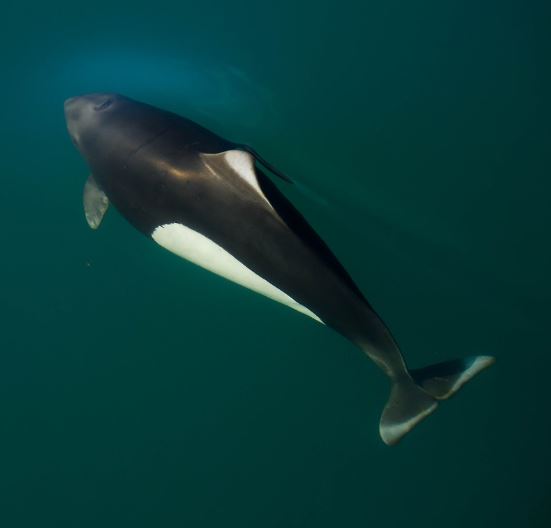Dall’s porpoise looks somewhat like orcas: they have a dark gray to black back and a white belly and flanks. Light gray to white fringing can be seen on the tail and dorsal fin. Although differences can be observed in these patterns; these could indicate the existence of subspecies, namely the dallitype and trueitype. The upper jaw contains 23 to 28 pairs of teeth, the lower jaw 24 to 28 pairs.
An adult is about 2 meters long. Males are usually slightly longer, up to 2.4 meters. This makes them larger than other porpoises. Newborn calves are about 0.7 meters long. Dall porpoises weigh between 130 and 200 kilograms.
You may also want to read about the monarch butterfly migration.
Habitat
The Dall’s porpoise is found in temperate regions of the Pacific Ocean. They live there in deep coastal and ocean waters, unlike other porpoises. The dallitype, the most widespread, occurs from the Arctic Ocean border to California and as far south as Japan. The trueitype occurs in the Pacific Northwest.

Behaviour
Dall’s porpoises are very active. They swim just below the surface at speeds around 55 mph. The trail of bubbles they leave behind is reminiscent of a cockscomb or feather. They sometimes race around excursion boats.
They live in small groups of 2 to 10 individuals. Groups are not very separated from others: sometimes groups hunt together. Very occasionally, even more than thousands of individuals congregate in the same place.
Dall’s porpoises hunt squid and small fish such as hake, herring, mackerel and capelin.
Protection
With hundreds of thousands of estimated specimens, this species is quite common. The largest population is thought to be in the Sea of Okhotsk. However, the species is under pressure from fishing, where they can become entangled in nets, and harpoon hunting from Japan. In 1988, 40,000 were killed, so far the record.
Thanks to a resolution by the International Whaling Commission in 1990, the number killed did drop to about 15,000 annually. This makes the Dall’s porpoise the most hunted whale. Added to these casualties are the unknown number of deaths from bycatch.